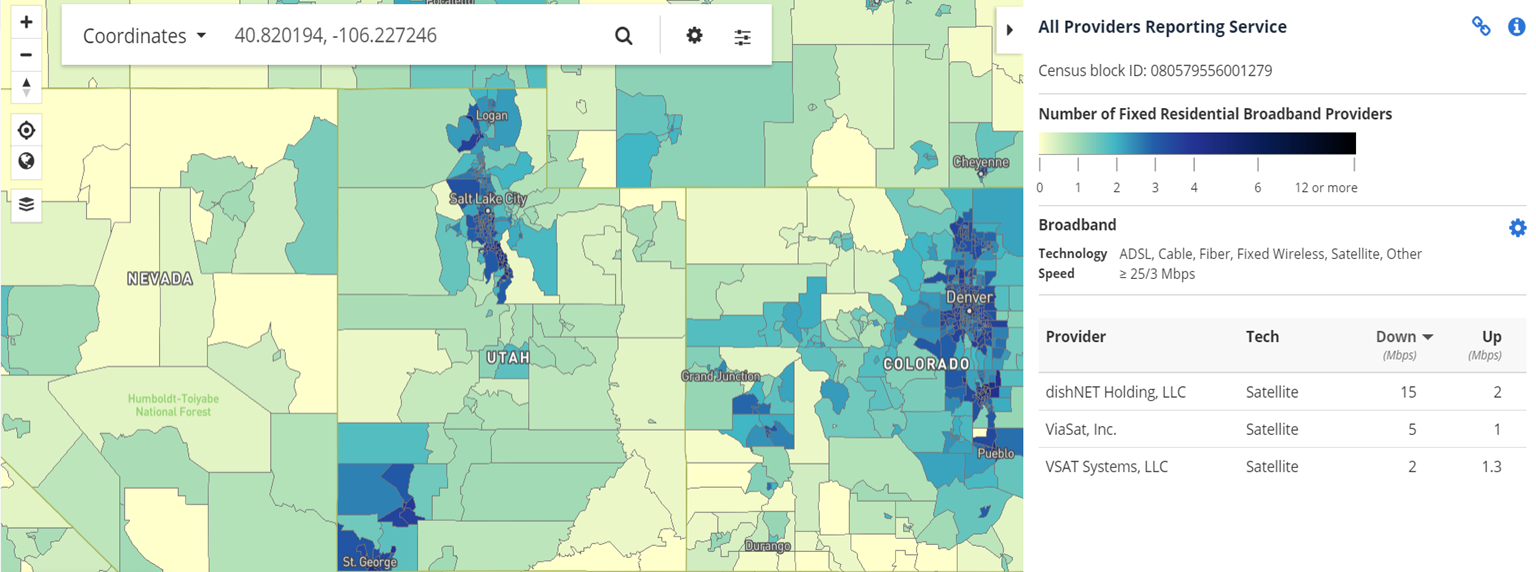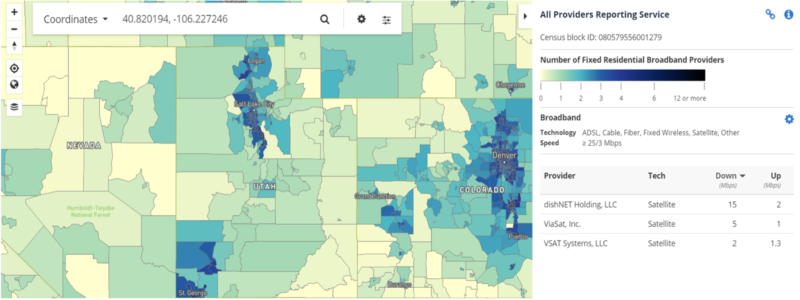 On February 22, 2018 the Federal Communications Commission updated the National Broadband Map, replacing the original map that was released seven years ago by the National Telecommunications and Information Administration (NTIA). The current map also has the ability to overlay satellite imagery. The map is currently using data collected in December 2016 based on Form 477 filings that broadband providers must make with the FCC. The map is based on census block level data. One of the features of the map allows the user to select a service provider and be able to see where the availability for that providers is located and offered. The map is cloud-based and will support more frequent data updates and display improvements at a far lower cost, according to the FCC news release for the map.
On February 22, 2018 the Federal Communications Commission updated the National Broadband Map, replacing the original map that was released seven years ago by the National Telecommunications and Information Administration (NTIA). The current map also has the ability to overlay satellite imagery. The map is currently using data collected in December 2016 based on Form 477 filings that broadband providers must make with the FCC. The map is based on census block level data. One of the features of the map allows the user to select a service provider and be able to see where the availability for that providers is located and offered. The map is cloud-based and will support more frequent data updates and display improvements at a far lower cost, according to the FCC news release for the map.
Improvements and features in the map will include:
- Fixed deployment data based on the latest collection by the FCC and updated twice annually
- Deployment summaries for seven different geographical types, which include nation, state, county, congressional district, city or town, Tribal area, and Core –based Statistical areas (like City NY-NJ-PA)
- Broadband availability and provider counts in each of the nation’s over 11 million census blocks for six technologies that include fiber, DSL, cable, satellite, fixed wireless, as well as seven speeds for a total of 441 combinations
- Deployment comparisons between geographic areas
- A portal for data downloads
- Satellite imagery map overlay that shows buildings, roads, and geography
- Graphs that show what friction of an area’s population has access to broadband at a given speed
Commissioner Rosenworcel’s statement says that using the map as a tool to bridge the digital divide, the FCC can identify where there is and isn’t service, where facilities are being built, and where that infrastructure is lacking, as well as how communities are connected and how they are at risk of falling behind. She also talked about using the “wisdom of crowds” to fix services in the map that are lacking. The public can email their concerns to the FCC at broadbandfail@fcc.gov to let the commission know of what is happening in their area in order to help the map display optimal updates.
